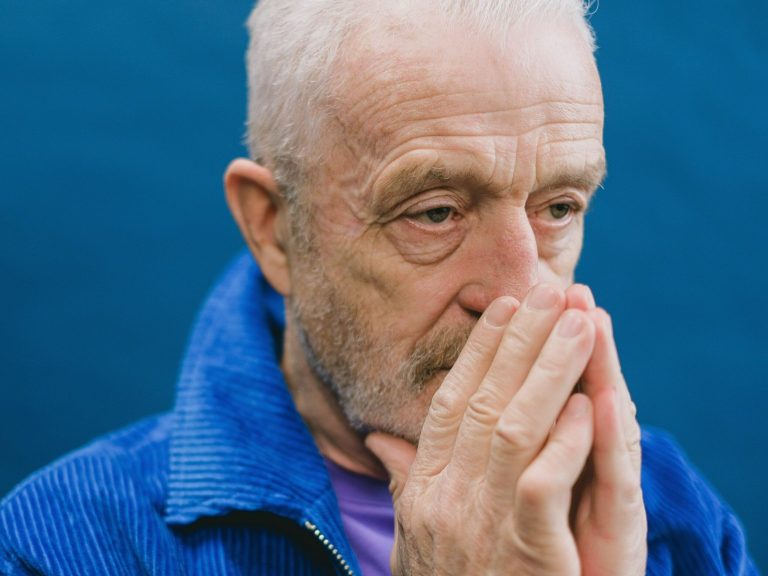Tension headache – causes, symptoms and treatment

Tension headache is included in the group of primary headaches that occur spontaneously, i.e. they are not related to diseases. A tension headache is a pain of moderate intensity that is most often caused by severe or chronic stress. How to recognize a tension headache? What disturbing symptoms should prompt an immediate visit to a doctor? Check.
- What do we call a tension headache? Basic information
- Causes of tension headache
- Tension headache – symptoms
- Tension headaches and migraine
- Treatment of tension headache
- Home remedies for tension headache
Headaches have various causes. The classification of headaches divides headache complaints into primary and secondary. Primary headaches, also known as idiopathic headaches, do not have any underlying disease. Secondary headaches are a symptom associated with various diseases, e.g. infectious diseases, neurological diseases and spine diseases.
What do we call a tension headache? Basic information
Tension headache, also known as vasomotor headache or neuralgia, is not a disease. This is a symptom that appears as a result of the impact of various factors on the body, e.g. stress, excess caffeine, hunger and fatigue. Tension headaches are more common in women. They usually appear after the age of 35, but they may also occur earlier, e.g. in people who live under chronic stress. Tension headache is one of the most frequently diagnosed primary headaches of moderate severity.
Tension headaches may occur episodically or chronically and are caused by, among others: by emotional tension. It is worth remembering that any headache should be consulted with a doctor. In the case of severe headaches and chronic headaches, it is necessary to perform tests to check whether the symptoms are related to abnormalities, e.g. in the central nervous system.
The simplest way to describe a tension headache is an unremarkable “ordinary” headache. His attacks last from several dozen minutes to even several days.
Causes of tension headache
The most common causes of tension headache include:
-
stress,
-
emotional tension,
-
too long breaks between meals,
-
dehydration,
-
caffeine abuse,
-
getting up early.
Tension headaches can also be caused by, for example, working at a computer. Typical of tension headaches are also headaches that appear after drinking large amounts of alcohol, intense physical exercise and are related to weather changes.
Tension pain does not always require pharmacological treatment. If it is related to dehydration, for example, it is enough to replenish the level of fluids in the body to make the troublesome symptoms go away. It is similar in the case of a tension headache due to hunger – eating a meal causes the pain to gradually subside.
It is estimated that Up to 20-40% of people suffer from tension headaches. adults. The direct cause of tension headache is excessive muscle tension in the neck, neck and shoulders.
The risk of frequent occurrence of tension headache is increased by, among others:
-
anxiety disorders,
-
life in constant motion,
-
posture defects,
-
incorrect posture during work (excessive strain on, among others, back muscles),
-
lack of physical activity,
-
untreated vision defects,
-
staying in stuffy rooms.
Tension headache occurs more often in people with increased sensitivity to pain and in people with a genetic predisposition.
Tension headache – symptoms
A tension headache is a pain that:
-
occurs on both sides and covers the entire head or is concentrated around the temples,
-
most often it is of a compressive nature, less often of a dilating nature.
Tension headaches may be accompanied by other symptoms and ailments, e.g. photophobia (photophobia) and hypersensitivity to sounds (phonophobia). However, the co-occurrence of both symptoms at the same time excludes the diagnosis of tension headaches.
The headache often begins in the neck area, gradually covering the entire head and increasing in severity. Tension headaches are reduced by physical activity. It is worth noting that during this pain there are no symptoms such as nausea and vomiting (the exception are chronic tension headaches, which may cause mild nausea).
Tension headaches and migraine
Migraine and tension-type headache differ in terms of their type, severity, location, and symptoms that precede or accompany the headache.
Migraine headaches are pulsating and affect part of the head (unilateral headache). In the case of a migraine, there is severe pain that prevents normal functioning. Unlike a migraine headache, a tension headache does not cause nausea, vomiting, dizziness and is not accompanied by flashes of light in the field of vision. Moreover, migraine prevents physical activity (migraine headaches worsen during physical activity).
It should be remembered that headaches whose clinical picture is similar to tension headaches may also cause various diseases, e.g. hypertension, sinusitis or diseases of the central nervous system, therefore any headache that recurs or occurs chronically and causes disturbing symptoms, e.g. nausea, vomiting and dizziness, you must consult a doctor.
Treatment of tension headache
Treating a tension headache involves more than just taking painkillers. It is very important to modify your lifestyle, ensure an adequate amount of sleep, proper nutrition and hydration of the body, and reduce stress and other factors that cause headaches. Before appropriate treatment is implemented, patients should undergo tests to exclude disease-related causes of pain. In the case of both sporadic and chronic tension-type headaches, there are no abnormalities in the test results. Chronic headaches always require appropriate treatment.
Home remedies for tension headache
Before reaching for painkillers, it is worth trying to deal with the headache with home remedies. Tension headaches may be relieved by:
-
drinking 2-3 glasses of water – hydrate your body gradually by drinking a few sips of water every several minutes,
-
eating a properly balanced meal,
-
relaxation of the neck, nape and shoulder muscles with massage or a warm compress,
-
oxygenation of the body.
Relaxation techniques, for example, also bring relief.
If the above methods for headache do not help, we can take an analgesic that contains, for example, acetylsalicylic acid, ibuprofen or paracetamol. Do not combine different painkillers and do not exceed the dose recommended by the drug manufacturer. Lack of improvement after taking an analgesic, worsening pain and the appearance of additional symptoms should prompt a visit to a doctor.
Sources:
-
A. Stępień, Headaches – diagnosis and treatment, Wydawnictwo Czelej, Lublin, 2004
-
A. Stępień, Headaches Pathophysiology – diagnosis – treatment, Medical Tribune Polska, Warsaw, 2017
-
I. Domitrz, W. Kozubski, Diagnostic and therapeutic recommendations in tension-type headaches, Polski Przegląd Neurologi, vol. 15, pp. 19-21, 2019
-
M. Siemiński, Tension headaches in the practice of a family doctor, Forum Medycyny Rodzinnej, no. 11(6), pp. 255-262, 2017






